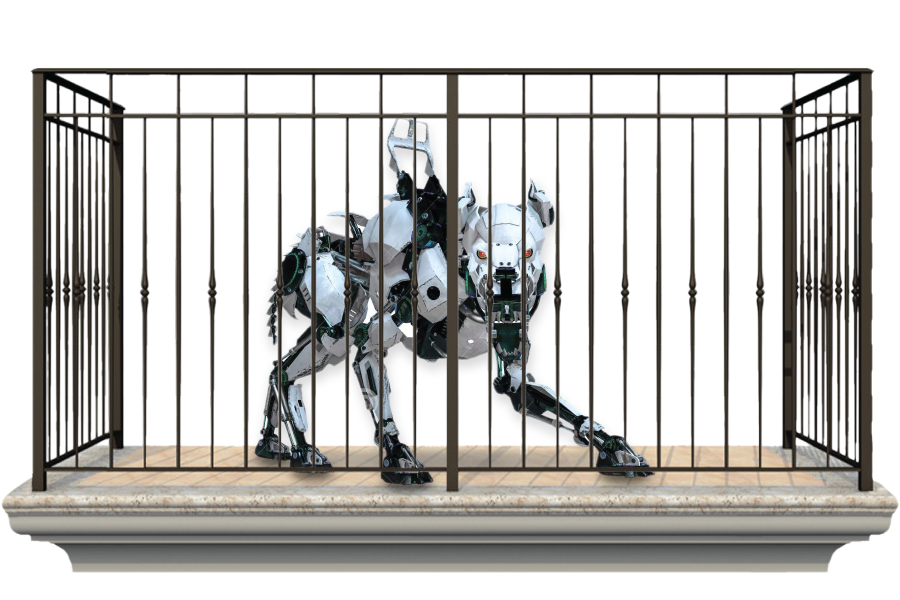Not all pet adoptions have happy endings. The animal chews on the furniture, pees where it shouldn’t, barks too much, and back to the shelter it goes. The most common explanation from adoptive families? “It just wasn’t a good fit.”
The same is true for robots, as we witnessed recently in the widely publicized saga of Digidog and the NYPD. In case you missed it, in 2020 the New York Police Department added a robotic dog to its ranks, planning to use it to assist with many of the same tasks real dogs do but in situations that are dangerous and potentially life-threatening. However, after Digidog was used at a crime scene at a Bronx apartment building and then at a Manhattan housing project, the mechanical creature became a target for vocal critics of the NYPD, who branded it as a symbol of overly aggressive policing in poor communities, invasive surveillance policies, and frivolous budget priorities. The dog was returned to its manufacturer in April 2021, five months before its contract was up.
Some interpret this episode as a black eye for security robotics – an example of technology gone too far. However, a more reflective analysis of the facts reveals a teachable moment that can lead to a more promising future for all of us holding a stake in the industry.
As crazy as it sounds, and not to belabor the “pet” analogy – because the vast majority of security robots we’re talking about look nothing like canine companions – it’s time for us to follow the lead of well-run animal shelters in the way they carefully match pets with homes where they will be most likely to succeed. Robotic manufacturers, as well as the dealers, integrators, and guard services who support them, must do the same for our robots by better establishing best practices for introducing them to humans and for their use in a security capacity.
Paul Benne, PSP, CPOI, is President of Sentinel Consulting, a full-service security consulting firm with clients representing a diverse range of markets. He says, “Robotic dogs are very cool, but they can also be very scary.” That said, there are plenty of applications where they are currently used with great success. The key is context. Patrolling the secure grounds of utilities and inspecting cargo at ports are ideal applications for them. Most of their interactions are with workers familiar with their capabilities who view them as friend, not foe.
The same sensibilities hold true for security robots in other shapes and sizes. Mr. Benne says, “There’s a lot of interest in robots, but it comes with trepidation about how they will be received by the people who frequent where they would be deployed.” As a result, he is seeing customers “wanting to deploy robotics in a friendly customer service way before they use them to develop a more thorough security posture.[1]”
Those of us at Robotic Assistance Devices (RAD) completely agree with this approach. In the case of our own security robots, like SCOT, Wally and ROAMEO, they all serve double-duty – providing concierge services to support employees’ and visitors’ requests for information or assistance, along with security responsibilities like surveillance, threat deterrence, and emergency communications. As part of the “adoption” process, companies should be counseled on the importance of on-boarding their robot in a way that’s non-threatening to those who will interact with it on a regular basis. Whether those folks are employees, customers, visitors, or community members at large, none should have reason to fear that the robot is eavesdropping on their conversations, tattling on their innocuous everyday activities, invading their privacy, or can in any way wield aggressive physical force. When used as a crime deterrent, it’s okay for the robot to appear menacing to a nighttime intruder, but freaking out the general public as it goes about its daily routine is counterproductive.
Of course, as we all become more accustomed to seeing robots deployed in various scenarios, the threshold will rise for what they can do without eliciting public discomfort. Many people already see them patrolling the aisles of their local grocery store. It won’t be long before using robots like the NYPD’s Digidog, ROAMEO, SCOT, Wally, and future solutions will seem commonplace. The need is real, and the benefits are great. For example, Mr. Benne explains, “When we use real dogs for large event security, it is particularly taxing on the dogs. They are overloaded with the task of searching, and the activity of being in tight crowds and heated conditions is very demanding. Most handlers need to give their dogs a break every 30 minutes to cool down and reset. Using robots for some of these tasks is highly beneficial as they have more uptime and no fatigue.”
RAD’s ROAMEO, an outdoor security robot capable of autonomously patrolling routes, identifying humans, vehicles, and license plate numbers, also interacts with people along its way. It can provide an unlimited number of concierge services, including local information, weather, directions, plus profit-generating advertising messages. It also features a panic button and enables people in distress to connect immediately with a live, remote human officer. The future success of security robots hinges upon this balancing act, whereby they perform their security role while being perceived as high-tech allies for maintaining a peaceful and safe environment – not as militant or aggressive.
There’s no question that very soon, daily life will resemble a science fiction film in which robots play a starring role. It’s up to us to make sure that the movie genre doesn’t also veer toward dystopian.
[1] https://rajant.com/leveraging-robotics-industrial-security-public-safety/

